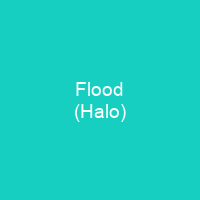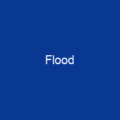The Flood is a fictional parasitic alien lifeform and one of the primary antagonists in the Halo multimedia franchise. First introduced in the 2001 video game Halo: Combat Evolved, it returns in later entries in the series such as Halo 2, Halo 3, and Halo Wars. The Flood is capable of infecting any sentient life of sufficient size; Flood-infected creatures, also called Flood, in turn can infect other hosts.
About Flood (Halo) in brief

Some Flood forms are procedurally generated, meaning that the Flood optimized their host forms over years to create different versions of the Flood. The player’s discovery of the flood is a major plot twist, and was one of. the surprises reviewers noted positively. The Flood’s return in Halo 2 and Halo 3 was less enthusiastically praised, and has been described as derivative and clichéd by some critics. It was added early in Bungie’s development of the 2001 game before the game had made its jump from the Macintosh platform to the Xbox. Early design for the flood was done by Bungie artist and writer Robert McLees, who considers himself \”the architect\” of the flooding. McLees also did all the early concept art for the Flood; the flood’s roots are reflected in concept art of a \”fungal zombie\” that McLees did for the earlier Bungie game Marathon 2: Durandal. The largest self-contained form the Flood can produce itself without using other biomass is an \”infection form\”. These forms seeks hosts, living or dead, and attempt to drive sharp spines into the host and thereby tap into the nervous system. Larger hosts are turned into forms for combat, growing long whip-like tentacles, while mangled and disused hosts are turn into incubators for more infection forms. These include the apex of Flood evolution, known as “Graveminds’”. The Flood also creates forms known as “key minds” to coordinate the flood.
You want to know more about Flood (Halo)?
This page is based on the article Flood (Halo) published in Wikipedia (as of Dec. 07, 2020) and was automatically summarized using artificial intelligence.







